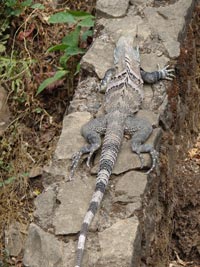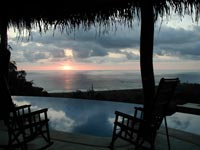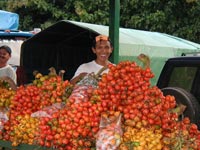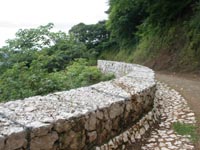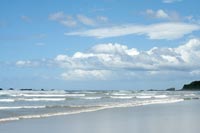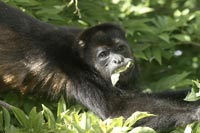COSTA RICA
"Costa Rica" is Spanish for "rich coast," and this tiny country, about the size of West Virginia, has plenty of lush, "rich" coast.
When you look at the country on a map, it appears to be mostly coastline, the Pacific on the west and the Caribbean on the east. You can easily drive from one coast to the other in a day.
Lying between Nicaragua to the north and Panama to the south, Costa Rica is the crown jewel of Central America. Because it's so close to the equator, 8-12 degrees north, the sun rises (along with the birds, howler monkeys and therefore almost every person in the rural areas) between 5 and 6 every morning of the year. Sunset on the Pacific is always between 5:30 and 6:30, and there are no daylight savings time changes to confuse this important issue.
Sunsets on the coast are nightly theatre.
THE PEOPLE
Of the many wonderful things about the country, the most wonderful is the people. The relative size of the middle class is larger in Costa Rica than any other Central American country. Children are loved extravagantly with endless patience. You rarely see a crying child. They grow up to be cheerful and considerate.
They are friendly. They avoid confrontation and are peace-loving. (The country has no military.) They smile a lot. They are fiercely proud of their country. They tend to look you in the eye. They will go out of their way to help.
A Cuban expat friend living in Nosara says, "If you don't believe they want to help you, try breaking down in your car on the side of the road." He's right. I've field-tested his theory, more than once.
The people are mostly European in ancestry. In the rural areas like Nosara, their lifestyle is simple and relaxed with lots of time for family and friends. The old and young get lots of attention. Old people get to go straight to the front of the teller window lines in banks.
If you spend much time here, and you don't come to love the Costa Rican people, it's probably about you.
POPULATION/CLIMATE
There are a little more than 4 million people. Half of them live in and around the capital, San Jose, in the Central Valley, a large, elevated plateau, surrounded by picturesque mountains.
Most parts of the country are warm year round, upper 70's in the central valley area, upper 80's on the coast.
There are only two seasons, dry and green, sometimes called summer and winter. But winter doesn't mean cold. It just means that there is some rain. In the green season, or winter, afternoons bring clouds and some tropical rainfall, usually followed by the re-emergence of the sun.
Both seasons have their joys, and many locals look forward to the rainy season because there is less tourist traffic. The vegetation becomes lush and green, which attracts more wildlife. Yet most days still have sunny mornings and stunning sunsets.
Late September and October, however, can bring immense amounts of rain, for days on end. Remember this when planning your visit.
NATURE/PARKS
The country's biodiversity attracts nature lovers from all over the world. There are three times the species of birds in Costa Rica as in the U.S. and Canada combined.
The tropical forests have 1500 tree species and provide a variety of habitats for the country's animal life, including four types of monkeys, sloths, armadillos, jaguars and tapirs. There are dazzling numbers of butterflies.
National parks cover almost 12 per cent of the country, and forest reserves and indigenous reservations boost the protected land area to 27 per cent.
The government has focused on parks and wildlife for almost 50 years, and that focus has paid off in the biological reserves and well preserved ecosystems.
TO LEARN MORE
The best source to get a good feel for the country may be the book "Choose Costa Rica..." by John Howells. Go to www.discoverypress.com to order it.
An aside about the author, John Howells: He travels and writes throughout Central America, and has seen lots of great places from which to choose a spot for his second home.
He chose-you guessed it-Nosara.


